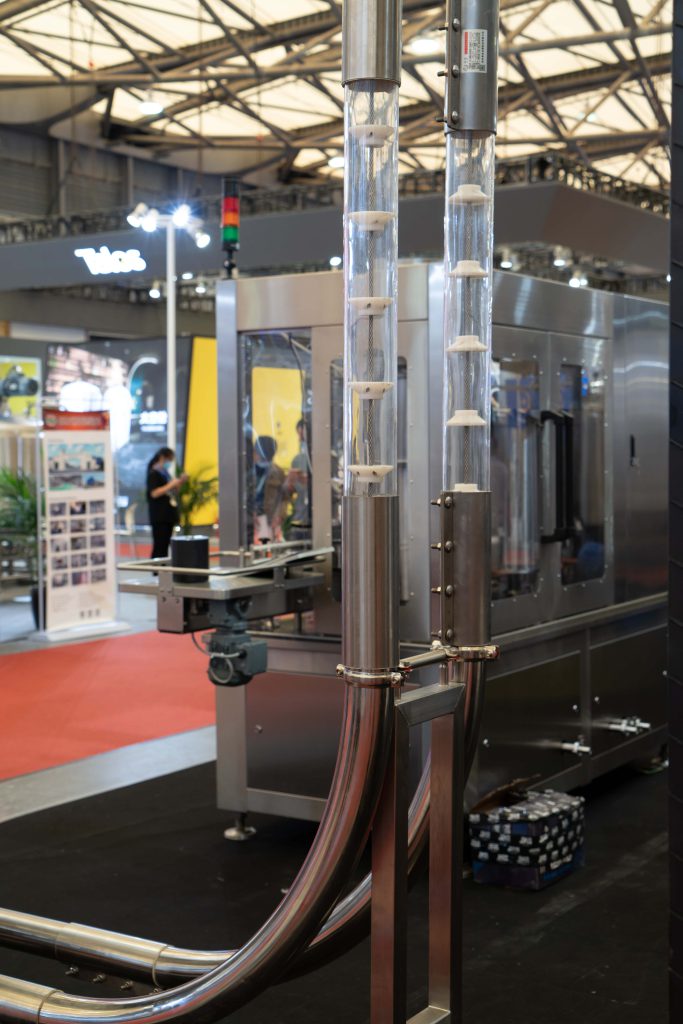Introduction

Automated conveyor systems have revolutionized modern industrial processes by enhancing efficiency, reducing labor costs, and improving overall productivity. These systems are pivotal in various sectors, from manufacturing to distribution, offering significant advantages over traditional manual handling methods. This blog explores in depth the comprehensive benefits of automated conveyor systems and their transformative impact on today’s industrial landscape.
Advantages of Automated Conveyor Systems
Enhanced Efficiency
Automated conveyor systems streamline material handling processes, significantly increasing throughput and operational speed. By automating tasks such as loading, unloading, sorting, and transportation, these systems minimize downtime and optimize workflow efficiency. Real-time tracking and monitoring capabilities further enhance operational visibility, enabling proactive adjustments and minimizing delays. This efficiency boost allows companies to handle higher volumes of goods with greater accuracy and consistency.
Cost Reduction
Implementing automated conveyor systems reduces labor costs associated with manual handling and repetitive tasks. With fewer personnel required for material transport and handling, companies can allocate resources more effectively towards skilled tasks, improving overall cost efficiency. Additionally, automation reduces the risk of injuries and worker fatigue, contributing to a safer working environment and lowering healthcare costs.
Improved Accuracy and Quality Control
Precision in material handling is critical in industries where quality control is paramount. Automated conveyor systems utilize advanced sensors, actuators, and controls to ensure accurate sorting, positioning, and delivery of materials. This minimizes errors and enhances product consistency, meeting stringent quality standards and customer expectations consistently. Improved accuracy also leads to fewer returns and rework, further reducing operational costs and enhancing customer satisfaction.
Scalability and Flexibility
Automated conveyor systems offer scalability and flexibility to adapt to changing business needs and production demands. Modular designs allow for easy expansion or modification of conveyor layouts and functionalities without disrupting ongoing operations. This scalability enables businesses to efficiently manage seasonal fluctuations, market demands, and future growth, maintaining operational agility and competitiveness.
Environmental Sustainability
Beyond efficiency gains, automated conveyor systems contribute to environmental sustainability by optimizing energy consumption and reducing carbon footprints. Energy-efficient motors, automated controls for power management, and sustainable material handling practices minimize resource consumption and waste generation. This commitment to sustainability aligns with global initiatives for eco-friendly manufacturing practices, enhancing corporate social responsibility efforts.
Case Studies and Applications
Automotive Industry
In the automotive sector, automated conveyor systems facilitate the seamless movement of components along assembly lines. These systems integrate with robotic arms and other automated technologies to optimize assembly processes, ensuring precise sequencing and reducing assembly time. This application improves production efficiency and enhances product quality in automotive manufacturing, supporting just-in-time manufacturing principles.
E-commerce and Distribution Centers
E-commerce giants rely heavily on automated conveyor systems to manage vast quantities of orders efficiently. These systems enable rapid sorting, routing, and packaging of goods, ensuring timely delivery to customers. By automating order fulfillment processes, companies can meet increasing consumer demand and adapt quickly to market fluctuations, maintaining competitiveness in the dynamic e-commerce landscape.
Comparison of Automated Conveyor System Types
| Conveyor Type | Advantages | Applications |
|---|---|---|
| Belt Conveyors | High throughput, suitable for various materials | Manufacturing, mining, airports |
| Roller Conveyors | Ideal for light to medium loads, easy maintenance | Warehousing, distribution centers |
| Chain Conveyors | Heavy-duty, durable, excellent for handling bulk materials | Automotive, steel manufacturing |
Implementing Automated Conveyor Systems
System Design and Integration

Designing an effective automated conveyor system requires comprehensive planning and integration with existing infrastructure. Factors such as layout optimization, conveyor type selection (e.g., belt, roller, or chain conveyors), and automation software integration are critical for maximizing system performance. Collaboration with experienced system integrators ensures seamless implementation and operational reliability, tailored to specific operational requirements and industry standards.
Maintenance and Support
Regular maintenance is essential for maximizing the lifespan and efficiency of automated conveyor systems. Scheduled inspections, preventive maintenance tasks, and timely repairs help minimize downtime and ensure consistent system performance. Additionally, ongoing training for operators and maintenance staff ensures proficient system operation and troubleshooting capabilities, optimizing overall system reliability and operational uptime.
Conclusion
Automated conveyor systems represent a transformative advancement in industrial automation, offering unparalleled efficiency, cost savings, and quality control benefits. From enhancing productivity in manufacturing plants to optimizing logistics in distribution centers, these systems continue to redefine operational standards across diverse industries worldwide. Embracing automated conveyor technology empowers businesses to achieve sustainable growth, maintain competitive advantage, and meet evolving market demands effectively.
FAQ
Q: What types of industries benefit most from automated conveyor systems?
A: Industries such as automotive manufacturing, e-commerce, food and beverage processing, and logistics and distribution centers benefit significantly from automated conveyor systems due to their efficiency, scalability, and operational flexibility.
Q: How do automated conveyor systems contribute to workplace safety?
A: By automating repetitive and physically demanding tasks, automated conveyor systems reduce the risk of workplace injuries associated with manual material handling, promoting a safer working environment and improving employee well-being.
Q: What factors should businesses consider when choosing an automated conveyor system?
A: Businesses should consider factors such as throughput requirements, facility layout, material handling characteristics, integration capabilities with existing automation, maintenance requirements, and long-term scalability when selecting an automated conveyor system.

